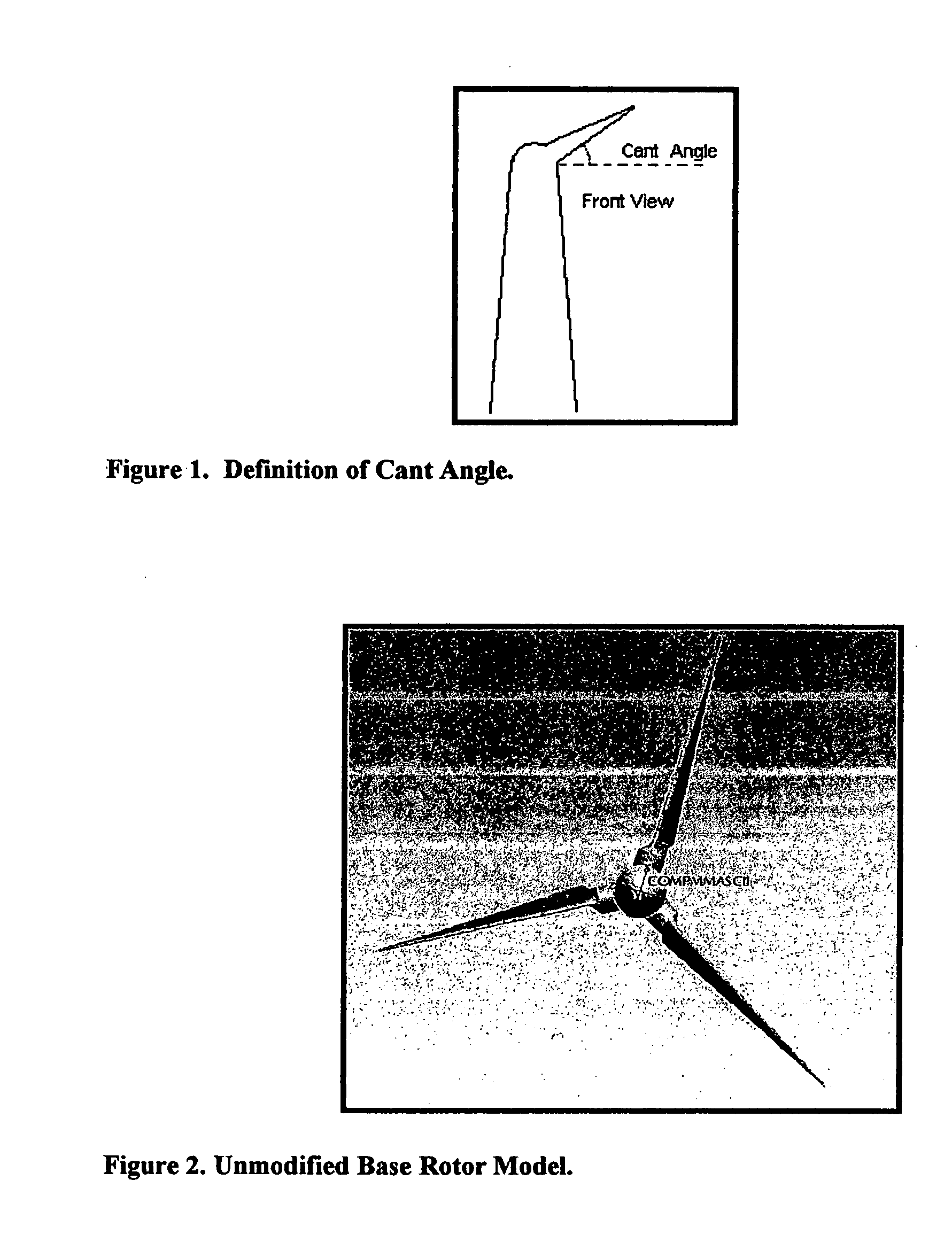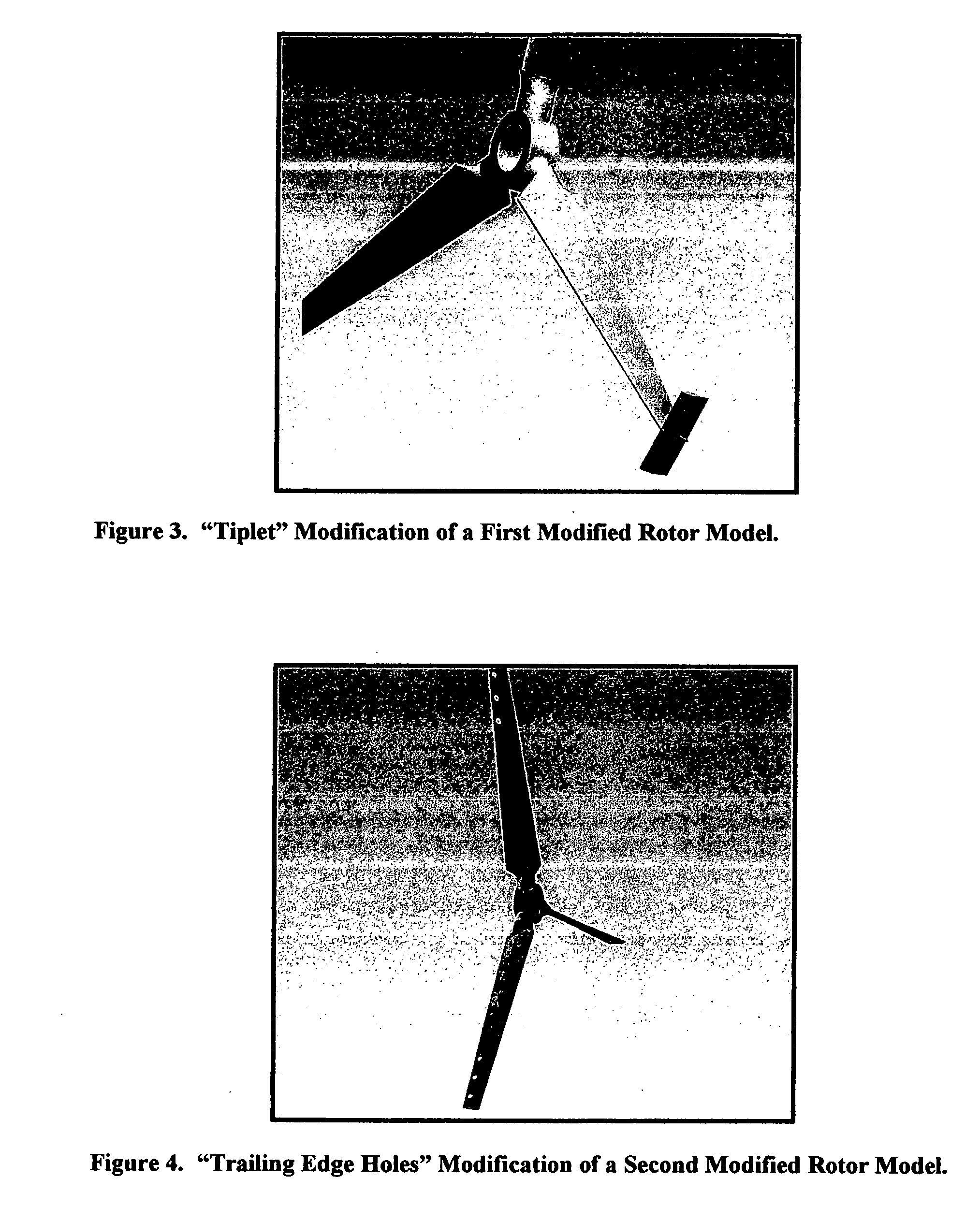Propeller blade
a propeller blade and propeller technology, applied in the field of propeller blades, can solve the problems of increasing drag on the wing, and achieve the effects of reducing the strength of the trailing vortex, reducing the level of the vortex, and reducing drag
- Summary
- Abstract
- Description
- Claims
- Application Information
AI Technical Summary
Benefits of technology
Problems solved by technology
Method used
Image
Examples
Embodiment Construction
[0034] An improved propeller blade is provided. A wind turbine comprising the improved blade produces greater power output and greater power coefficient than a wind turbine comprising unmodified propeller blades. A wind turbine comprising the improved blade also produces greater power output and greater power coefficient than a wind turbine comprising other known blade modifications.
[0035] Figure A shows wing tip vortices as shed in nominal conditions. Since the static pressure on the top of a wing is less than that on the bottom, a flow develops that rotates the air around the tip. For a left-hand wing section, such as depicted in Figure A, the flow rotates in a clockwise direction when viewed from behind. For a right-hand wing section, the flow would rotate in the opposite direction, counter-clockwise. These induced rotational flows are generally called tip vortices.
[0036] The tip vortices tend to remain for a considerable length of time. As the wing moves forward, the vortex re...
PUM
 Login to View More
Login to View More Abstract
Description
Claims
Application Information
 Login to View More
Login to View More - R&D
- Intellectual Property
- Life Sciences
- Materials
- Tech Scout
- Unparalleled Data Quality
- Higher Quality Content
- 60% Fewer Hallucinations
Browse by: Latest US Patents, China's latest patents, Technical Efficacy Thesaurus, Application Domain, Technology Topic, Popular Technical Reports.
© 2025 PatSnap. All rights reserved.Legal|Privacy policy|Modern Slavery Act Transparency Statement|Sitemap|About US| Contact US: help@patsnap.com



